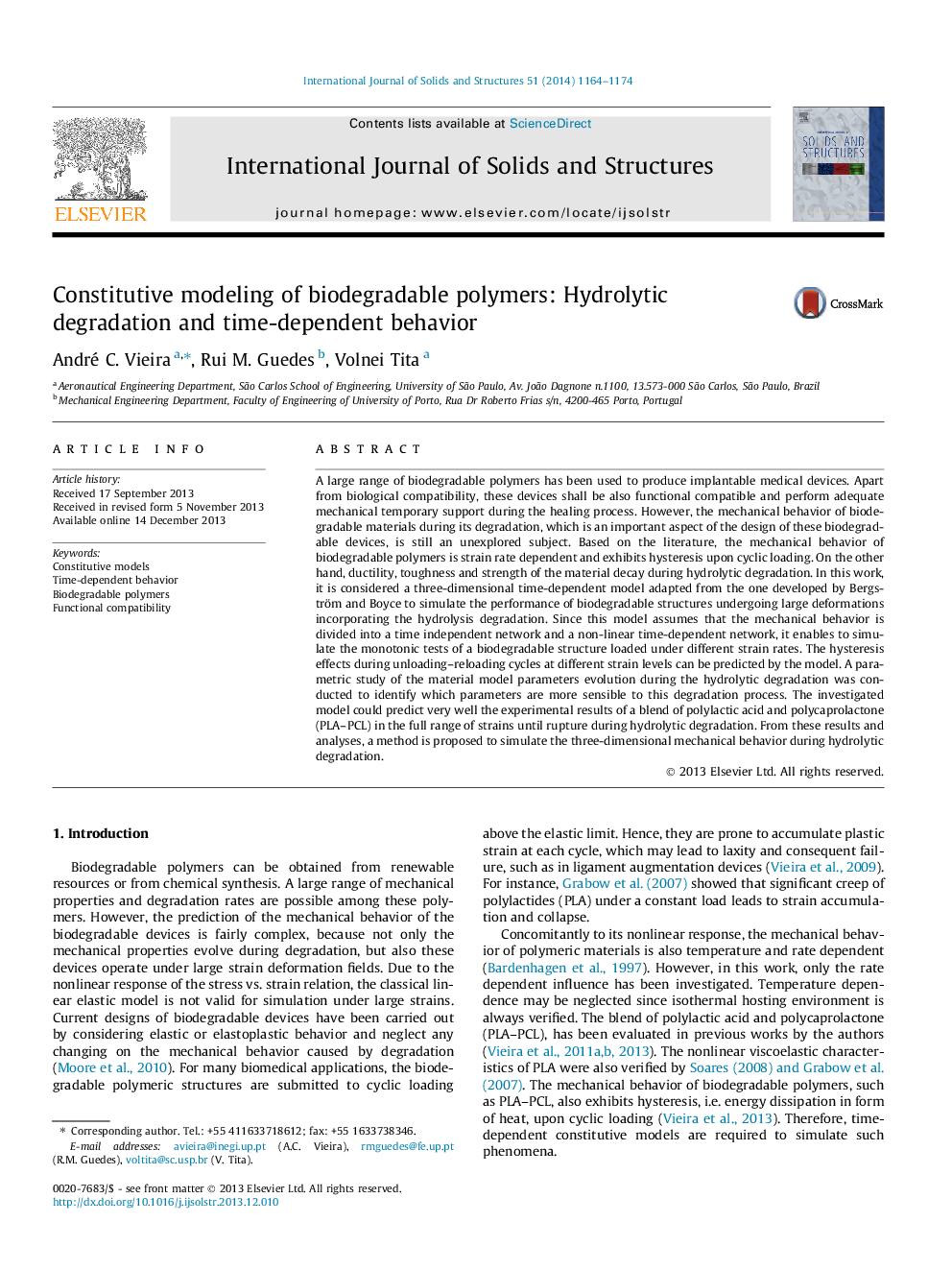| کد مقاله | کد نشریه | سال انتشار | مقاله انگلیسی | نسخه تمام متن |
|---|---|---|---|---|
| 277493 | 1430245 | 2014 | 11 صفحه PDF | دانلود رایگان |
• Biodegradable polymers show non-linear and time-dependent mechanical behavior.
• We propose a method to predict the viscoplastic behavior of biodegradable polymers during hydrolytic degradation.
• The method is based on the three-dimensional Bergström–Boyce viscoplastic model.
• Shear modulus and flow resistance are linear functions of the hydrolytic damage.
• The other material model parameters remain constant during hydrolytic degradation.
A large range of biodegradable polymers has been used to produce implantable medical devices. Apart from biological compatibility, these devices shall be also functional compatible and perform adequate mechanical temporary support during the healing process. However, the mechanical behavior of biodegradable materials during its degradation, which is an important aspect of the design of these biodegradable devices, is still an unexplored subject. Based on the literature, the mechanical behavior of biodegradable polymers is strain rate dependent and exhibits hysteresis upon cyclic loading. On the other hand, ductility, toughness and strength of the material decay during hydrolytic degradation. In this work, it is considered a three-dimensional time-dependent model adapted from the one developed by Bergström and Boyce to simulate the performance of biodegradable structures undergoing large deformations incorporating the hydrolysis degradation. Since this model assumes that the mechanical behavior is divided into a time independent network and a non-linear time-dependent network, it enables to simulate the monotonic tests of a biodegradable structure loaded under different strain rates. The hysteresis effects during unloading–reloading cycles at different strain levels can be predicted by the model. A parametric study of the material model parameters evolution during the hydrolytic degradation was conducted to identify which parameters are more sensible to this degradation process. The investigated model could predict very well the experimental results of a blend of polylactic acid and polycaprolactone (PLA–PCL) in the full range of strains until rupture during hydrolytic degradation. From these results and analyses, a method is proposed to simulate the three-dimensional mechanical behavior during hydrolytic degradation.
Figure optionsDownload as PowerPoint slide
Journal: International Journal of Solids and Structures - Volume 51, Issue 5, 1 March 2014, Pages 1164–1174
